05 Essential Health Gadgets for a Healthier Lifestyle
Health gadgets are innovative devices designed to help us stay proactive about our wellness and track various health metrics. From smartwatches that monitor heart rate, sleep quality, and physical activity, to wearable ECG monitors and blood pressure cuffs, these gadgets provide real-time health insights. There are also advanced tools like portable EKG machines, glucose monitors for diabetic care, and even smart scales that measure body composition. By seamlessly integrating into our daily lives, these gadgets empower us to make healthier choices, stay on top of vital signs, and even share important data with healthcare providers when needed.
01. Smartwatch with Health Monitoring: The Modern Health gadgets Fitness Companion
In recent years, the tech industry has taken wearable technology to new heights. The smartwatch, once primarily a stylish extension of a smartphone, has transformed into a powerful health monitoring tool. Today, a smartwatch can track various health metrics, encourage healthier habits, and even alert users to potential health issues. Let’s dive into the world of health-monitoring smartwatches and explore how they’re revolutionizing personal health care.
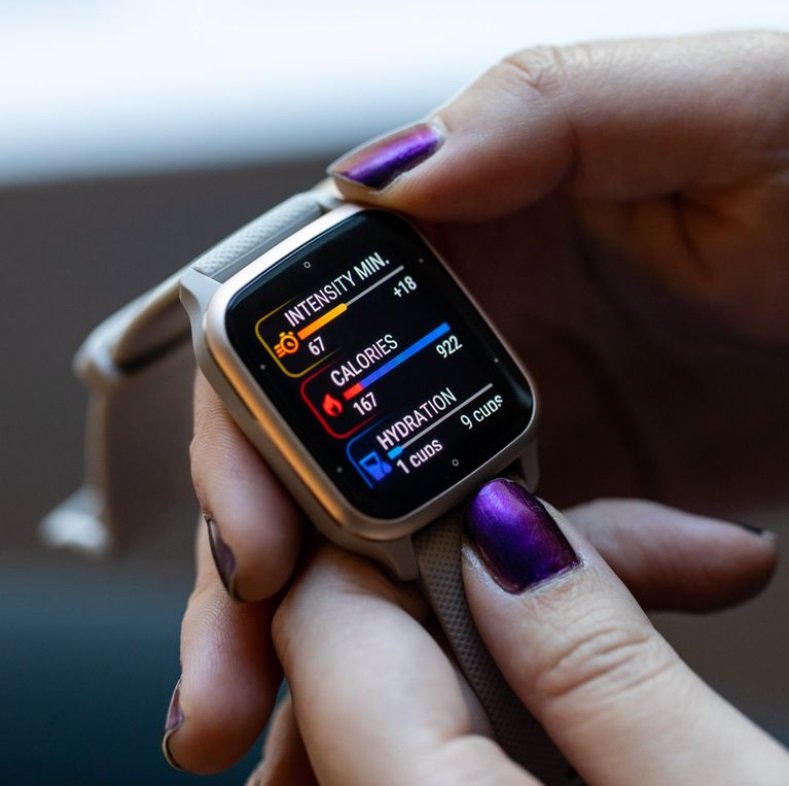
Why Health Monitoring Smartwatches Are a Game Changer
Health monitoring on smartwatches isn’t just a luxury—it’s a game changer for people who want to keep tabs on their health without visiting a doctor frequently. By monitoring metrics like heart rate, sleep patterns, blood oxygen levels, and more, these devices can give users real-time data that can motivate them to live healthier lives. It’s like having a personal trainer, sleep expert, and health coach on your wrist.
Key Health Features in Today’s Smartwatches
Most modern smartwatches are packed with features that can monitor various aspects of health. Here are some of the most popular ones:
- Heart Rate Monitoring: This feature tracks the user’s heart rate 24/7. Many smartwatches offer continuous monitoring, providing insights into resting heart rate and heart rate variability. Some even alert users if their heart rate goes above or below certain levels, potentially indicating issues like arrhythmia.
- Blood Oxygen (SpO2) Monitoring: The blood oxygen sensor helps users understand how well their body is absorbing oxygen. Low SpO2 levels can indicate issues such as respiratory problems or poor blood circulation. During workouts or high-altitude activities, monitoring blood oxygen levels can be particularly valuable.
- ECG (Electrocardiogram) Function: High-end smartwatches often come with an ECG feature, which records the electrical activity of the heart. This can be especially useful for users with known heart conditions, as the watch can detect abnormal heart rhythms that may require medical attention.
- Sleep Tracking: Sleep is a crucial aspect of health, and poor sleep can lead to a host of health problems. With sleep tracking, users can monitor their sleep patterns, including deep, light, and REM sleep cycles. Some smartwatches even provide sleep scores and suggestions for improvement.
- Stress and Respiration Tracking: With sensors measuring heart rate variability, smartwatches can also gauge stress levels throughout the day. Some devices even provide guided breathing exercises to help manage stress, encouraging mindful breaks.
- Calorie and Step Counting: These are some of the oldest features in fitness trackers but remain among the most popular. Tracking steps, calories burned, and physical activity levels helps users stay active and meet their fitness goals.
- Temperature Monitoring: Some newer models come with temperature sensors that can monitor fluctuations in skin temperature. This feature can help identify the onset of fever or other changes in health.
Benefits of Health Monitoring Smartwatches(Health gadgets)
1. Early Detection and Prevention: With regular health tracking, users can catch irregular patterns early. Some smartwatches even come with built-in AI that alerts users to anomalies, prompting them to seek medical help sooner rather than later.
2. Encourages Active Lifestyle: By setting goals, tracking progress, and even rewarding achievements, health-monitoring smartwatches help users stay motivated to lead a more active lifestyle. They’re especially helpful for those looking to lose weight or improve their physical fitness.
3. Health Data at Your Fingertips: Most smartwatches allow users to store their health data in an app. This data can be easily shared with healthcare professionals, providing a more comprehensive picture of one’s health over time.
4. Mental Health Support: Health monitoring isn’t limited to physical health; some smartwatches also focus on mental wellness. Features like stress monitoring and guided meditation apps encourage users to take mental health seriously.
Choosing the Right Health Monitoring Smartwatch
When choosing a smartwatch(Health gadgets) with health monitoring, it’s important to think about your specific needs. Here’s what to consider:
- Compatibility: Ensure that the smartwatch is compatible with your smartphone and the health apps you prefer.
- Battery Life: Health monitoring can consume significant battery power, so choosing a device with a decent battery life is essential, especially if you plan to wear it 24/7.
- Water Resistance: For those who swim or engage in water-based activities, a waterproof model will be important.
- Budget: While high-end models come with extensive health features, there are affordable options with basic yet useful health monitoring capabilities.
Some popular options include the Apple Watch Series 8 (with ECG, SpO2, and stress monitoring), Samsung Galaxy Watch (known for a strong health-tracking suite), Fitbit Sense (emphasizing sleep and stress tracking), and Garmin models (for fitness enthusiasts).
Privacy and Limitations
It’s worth noting that while health-monitoring smartwatches provide valuable data, they don’t replace professional medical advice. They should be used as supplementary tools, not substitutes for regular health check-ups.
Also, privacy is a significant concern. Most reputable brands prioritize data security, but users should review the privacy policy of their chosen device and make sure data isn’t shared without consent.
The Future of Health Monitoring Smartwatches(Health gadgets)
The health-monitoring smartwatch industry continues to innovate. In the coming years, we can expect even more advanced features such as blood pressure monitoring, glucose tracking, and improved AI for predicting health risks. Future devices may also integrate more seamlessly with healthcare providers, enabling real-time health updates and remote care.
02. Portable ECG Monitors: A Closer Look at Convenient Heart Health Monitoring(Health gadgets)
With advancements in medical technology, monitoring heart health has become easier, more efficient, and portable. Portable ECG monitors(Health gadgets) are among the most impressive of these innovations, allowing individuals to keep track of their heart’s electrical activity anytime, anywhere. They’re particularly valuable for those with heart conditions, athletes, and health-conscious people who want to stay informed about their cardiovascular health.
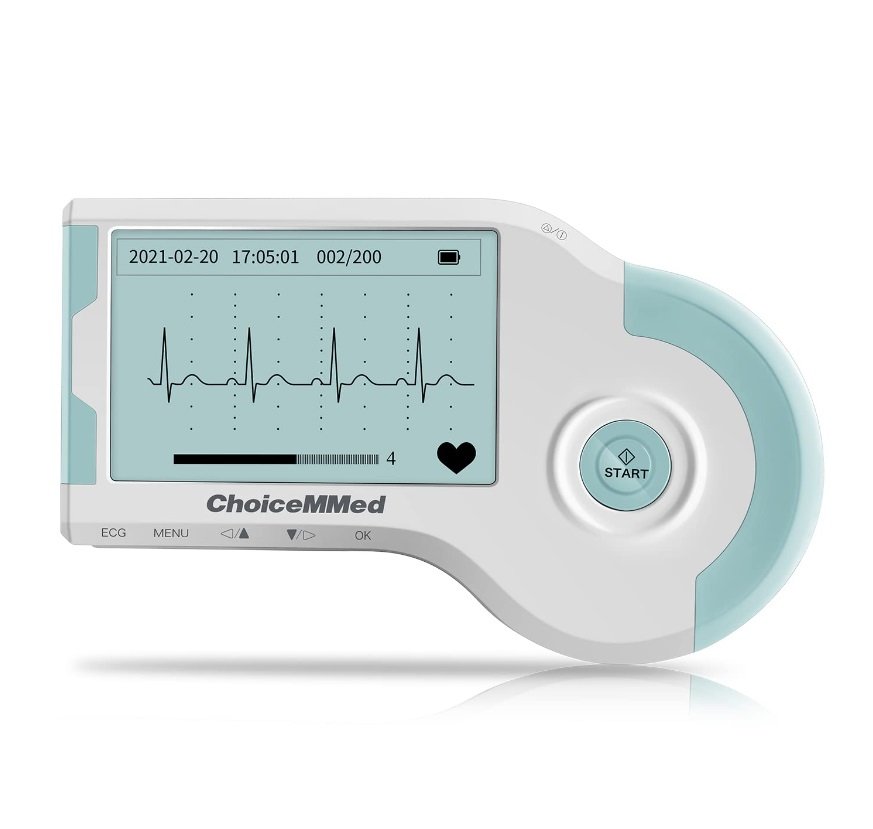
Let’s explore what portable ECG monitors(Health gadgets) are, how they work, who benefits from them, and what to consider when choosing one.
What Are Portable ECG Monitors?
A portable ECG (electrocardiogram) monitor is a compact, user-friendly device that records the heart’s electrical activity. Traditional ECG machines found in hospitals or clinics require multiple electrodes and are often complex. Portable ECG monitors, however, are simplified versions designed for personal use. They are small, battery-powered, and can be used at home, while traveling, or during daily activities, giving users insights into their heart rhythm and any abnormalities.
These devices typically consist of a small handheld unit with built-in electrodes that, when in contact with the skin, read the heart’s electrical signals. Most portable ECG monitors connect to smartphone apps where users can view, store, and sometimes even share their ECG results with healthcare professionals.
How Do Portable ECG Monitors Work?
Portable ECG monitors work by detecting and recording the electrical impulses generated by the heart with each beat. The device’s electrodes measure these impulses, creating a graph that shows the heart’s rhythm. Here’s a step-by-step breakdown of how they typically operate:
- Set Up the Device: Most portable ECG monitors are easy to set up and come with minimal accessories. Users simply turn on the device and place their fingers on the electrodes or hold the device against their chest as instructed.
- Record the ECG: In a few seconds, the device captures the heart’s electrical signals. Many devices display the ECG waveform in real time on the monitor screen or connected app.
- Analyze the Data: Advanced models offer analysis features, highlighting potential irregularities like atrial fibrillation (AFib) or tachycardia. While the results can help spot irregularities, users should remember these readings are meant for monitoring and not as definitive medical diagnoses.
- Store and Share Data: Most devices allow users to store ECG recordings on a smartphone app or in cloud storage. This feature is particularly beneficial for sharing data with healthcare providers, especially when needing a quick consult or second opinion.
Benefits of Portable ECG Monitors(Health gadgets)
Portable ECG monitors have gained popularity for a range of reasons. Here are some notable benefits:
- Early Detection of Heart Issues: For people with a family history of heart disease or pre-existing conditions, regular monitoring helps detect abnormalities early, making it easier to seek timely medical intervention.
- Convenience and Flexibility: No need to visit a hospital every time you want to check your heart rhythm. You can perform ECG checks at home or even while traveling. This is especially valuable for people in rural areas or those with limited access to regular healthcare facilities.
- User-Friendly: Unlike traditional hospital ECG machines, portable monitors are designed with simplicity in mind. With basic instructions, most people can operate them effectively without any medical training.
- Cost-Effective: Frequent hospital visits and diagnostic tests can be expensive. Portable ECG monitors offer a more affordable option for regular heart health checks, reducing the need for constant appointments.
- Peace of Mind: Having the ability to check on your heart anytime you feel a bit “off” can be very reassuring. Portable ECG monitors are like having a mini checkup at your fingertips.
Who Can Benefit from a Portable ECG Monitor?
Portable ECG monitors(Health gadgets) are a practical choice for a range of people, including:
- Patients with Cardiac Conditions: Those with known heart arrhythmias, AFib, or other heart conditions can monitor changes in their heart rhythm.
- Elderly Individuals: Older adults are more prone to heart issues, and regular monitoring can be a proactive way to stay alert to any changes.
- Athletes: Intense physical activity can impact heart health. Portable ECG monitors allow athletes to ensure their training is not overtaxing their cardiovascular systems.
- Health-Conscious Individuals: Even without a history of heart problems, some people may wish to monitor their heart health as a preventive measure.
Key Features to Consider When Choosing a Portable ECG Monitor
Not all portable ECG monitors(Health gadgets) are the same, and there are various features to consider when purchasing one:
- Ease of Use: A good portable ECG monitor should be easy to operate, especially if it’s for personal use. Look for models with simple, intuitive interfaces and minimal setup.
- Connectivity Options: Many models offer Bluetooth connectivity, allowing you to sync data with a smartphone app or computer. This feature is essential for those who want to save and review their data.
- Data Storage and Sharing: Some devices allow users to store multiple ECG readings, and the best ones offer easy sharing options, letting you send results to healthcare providers.
- Battery Life: Check the battery life of the device, especially if you plan to use it frequently. Some monitors are rechargeable, while others may require disposable batteries.
- Accuracy and Reliability: Look for models that have been FDA-approved or endorsed by medical professionals. Reliable brands are more likely to provide accurate readings.
- Price and Warranty: Portable ECG monitors(Health gadgets) come in various price ranges. Consider what features are essential for you and ensure the product comes with a warranty for added peace of mind.
Popular Portable ECG Monitors(Health gadgets) on the Market
There are numerous models available, each with its strengths. Here are a few that are highly recommended:
- KardiaMobile by AliveCor: Known for its compact size, this FDA-cleared device is popular for AFib detection. It connects to a smartphone app, where users can monitor and share their ECG results.
- Wellue Heart Monitor: This is another compact monitor with Bluetooth connectivity and multi-day battery life. It’s known for its accuracy and user-friendly design.
- Omron HeartGuide: Though more advanced, Omron’s wearable monitor integrates an ECG(Health gadgets) with a blood pressure monitor, providing a more comprehensive health profile for those who need it.
Are Portable ECG Monitors Worth It?
For many people, yes. These devices offer peace of mind, convenience, and an affordable way to stay aware of your heart health. However, while portable ECG monitors(Health gadgets) provide valuable data, they should not replace regular check-ups or a professional diagnosis. They’re tools to help people manage their health better but are best used in conjunction with regular medical advice.
Portable ECG monitors(Health gadgets) have made it easier to stay in tune with heart health, and as technology continues to improve, these devices will only get better and more accessible. By providing an easy way to check for irregularities, they’re empowering people to take charge of their heart health proactively. Whether you’re monitoring an existing condition, keeping an eye on family health risks, or just wanting peace of mind, a portable ECG monitor can be a valuable addition to your personal healthcare toolkit.
Ultimately, portable ECG monitors are an excellent example of how technology is bringing healthcare into our hands—helping us keep an eye on our heart and make informed decisions to live healthier lives.
03. Sleep Trackers: Understanding, Benefits, and How They Work
In our fast-paced lives, a good night’s sleep can often feel elusive. Enter sleep trackers – the high-tech solution that promises to help us understand our sleep patterns and improve our quality of rest. But how exactly do they work, and are they worth the investment? Let’s dive into the world of sleep trackers(Health gadgets), exploring how they function, the benefits they offer, and what to consider if you’re thinking about adding one to your bedtime routine.
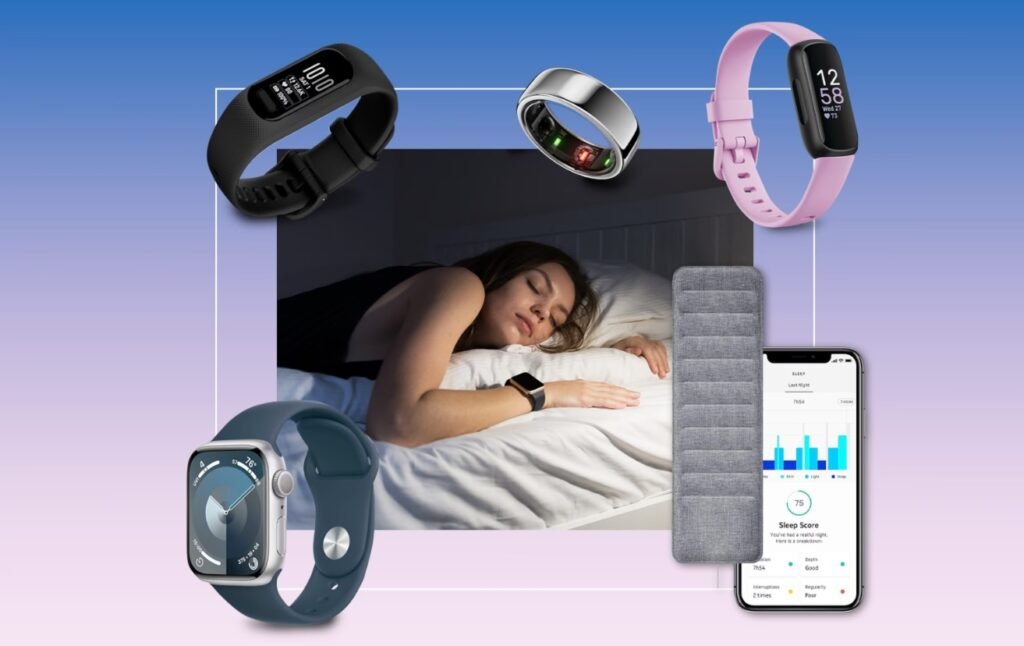
What Are Sleep Trackers?
A sleep tracker(Health gadgets) is a device or app designed to monitor and analyze sleep patterns. Available in various forms – such as wearable devices, bedside devices, or even smartphone(Health gadgets) apps – these trackers gather data on aspects like heart rate, breathing rate, body movement, and sometimes even brain activity. This information provides a glimpse into the quality of your sleep, helping you identify potential sleep issues and gain insights into how lifestyle factors like diet, exercise, and stress impact your rest.
How Do Sleep Trackers Work?
At their core, sleep trackers rely on sensors to detect and analyze physiological data while you sleep. Depending on the type of tracker, they may use the following methods:
- Movement Monitoring: Most wearable sleep trackers, like those in fitness bands or smartwatches, use accelerometers to track body movements. If you’re tossing and turning, the device records these motions, estimating your sleep quality based on the amount of movement during the night.
- Heart Rate Tracking: Many advanced trackers also monitor heart rate variability (HRV) to identify the different sleep stages: light, deep, and REM sleep. Changes in heart rate can indicate transitions between these stages, helping the tracker to estimate how much time you spend in each.
- Breathing and Oxygen Levels: Some sleep trackers use photoplethysmography (PPG) to measure blood oxygen levels and breathing rate, which can be particularly useful for detecting sleep disorders like sleep apnea.
- Sound Detection: Certain bedside devices or smartphone apps use sound to detect snoring or other noises that might disrupt sleep. This feature can provide insights into whether sounds in your environment, such as traffic or a partner’s snoring, are impacting your rest.
- Temperature and Environmental Sensors: Advanced sleep trackers may also measure temperature or humidity, helping you understand how room conditions affect your sleep quality.
Benefits of Using a Sleep Tracker(Health gadgets)
So why invest in a sleep tracker(Health gadgets)? Here are some of the benefits that make these devices(Health gadgets) popular:
- Insight into Sleep Patterns: Sleep trackers can give you a detailed breakdown of your sleep stages and durations. Knowing when you enter deep or REM sleep – the phases crucial for restorative rest and cognitive health – can help you tailor your routine to improve sleep quality.
- Identifying Sleep Disorders: If you suspect you have a sleep disorder, a sleep tracker may be able to identify irregular patterns. While they’re not a replacement for professional diagnosis, they can highlight potential issues like insomnia, sleep apnea, or restless leg syndrome, prompting you to seek medical advice.
- Improving Sleep Hygiene: Many trackers offer insights or recommendations to improve sleep hygiene. For instance, if your tracker consistently shows fragmented sleep, you might be encouraged to adjust your bedtime, limit caffeine intake, or reduce screen time before bed.
- Personalized Sleep Goals: Sleep trackers can help set realistic sleep goals based on your unique needs. Instead of a one-size-fits-all approach, they can offer personalized tips to help you meet these goals – whether that’s by getting to bed earlier, improving your environment, or adding more physical activity during the day.
- Tracking Long-Term Trends: Tracking sleep over weeks or months can reveal trends, showing you how lifestyle changes, travel, or stress impact your sleep. Seeing this data over time allows you to make adjustments for better long-term sleep quality.
Choosing the Right Sleep Tracker(Health gadgets)
With the market brimming with options, here’s what to consider when selecting a sleep tracker(Health gadgets) that’s right for you:
- Type of Device: Do you want a wearable tracker, like a smartwatch(Health gadgets), or a non-wearable, like a bedside device? Wearables tend to offer more comprehensive data, but some people find them uncomfortable for sleep. If you prefer a non-intrusive option, bedside trackers or apps may be better.
- Features: Look for a tracker with the features most important to you. For example, if you want detailed insights into sleep stages, a tracker with heart rate monitoring is essential. For those with suspected breathing issues, an oxygen monitoring feature may be valuable.
- Battery Life: If you’re considering a wearable tracker, battery life matters. Some devices need recharging every few days, while others can go a week or more without charging. Keep in mind that frequent charging can become inconvenient over time.
- App Compatibility: The accompanying app can make a big difference in user experience. Check if the sleep tracker is compatible with your smartphone, and look at app reviews to ensure it’s user-friendly and offers meaningful insights.
- Price: Sleep trackers range in price from budget-friendly options to high-end devices. Decide on a budget and look for a tracker that offers the best features within your range.
Are Sleep Trackers Accurate(Health gadgets)?
While sleep trackers(Health gadgets) can be helpful, it’s important to understand that they’re not perfect. Consumer-grade trackers rely heavily on estimations, especially for sleep stages, which are more accurately measured in a sleep lab setting. That said, sleep trackers are fairly accurate for tracking trends and can provide valuable insights into general sleep patterns.
Tips to Maximize Your Sleep Tracker’s Effectiveness
To get the most out of your sleep tracker, here are some tips:
- Consistency: Use the tracker consistently to monitor trends over time. Spotting patterns requires data over several nights, so stick with it.
- Adjust Based on Insights: Review the insights and see if they highlight factors you can control, like bedtimes or pre-sleep activities. Making small, data-driven adjustments can often lead to noticeable improvements.
- Focus on the Big Picture: Instead of fixating on nightly data, pay attention to broader trends. A single night of poor sleep is normal; it’s the ongoing patterns that matter.
- Pair with Other Healthy Habits: Remember that sleep trackers are tools, not magic solutions. Pair your sleep tracking with a balanced diet, regular exercise, and stress management for the best overall results.
04. Blood Pressure Monitors(Health gadgets): Your Guide to Health at Home
In today’s world, keeping track of our health is more essential than ever. A major part of monitoring health is keeping an eye on blood pressure (BP). High blood pressure, or hypertension, affects millions and can lead to severe health issues like heart attacks and strokes if left unchecked. This is where blood pressure monitors come in—a handy device that allows people to keep track of their blood pressure easily and effectively at home.

If you’re considering getting one, here’s everything you need to know about blood pressure monitors, how they work, and what to look for when buying one.
What is a Blood Pressure Monitor(Health gadgets)?
A blood pressure monitor is a device(Health gadgets) designed to measure and display your blood pressure. The device typically comes in two main types: manual and automatic (digital). The automatic version is the most popular, as it’s easy to use and provides fast results.
When you use a blood pressure monitor, it will display two readings:
- Systolic Pressure: The pressure when your heart beats.
- Diastolic Pressure: The pressure when your heart is at rest between beats.
These two numbers provide a picture of your cardiovascular health and help you track if your blood pressure is within a healthy range.
Types of Blood Pressure Monitors(Health gadgets)
There are several types of blood pressure monitors(Health gadgets) available, each with its own set of features. Here’s a quick overview:
- Upper Arm Monitors
- The most widely used and recommended by doctors.
- These monitors come with a cuff that wraps around the upper arm and gives more accurate readings.
- Great for regular home use.
- Wrist Monitors
- Portable and easy to use, especially if you need to monitor your BP while traveling.
- However, they can be less accurate than upper arm monitors, as arm position affects the readings.
- Finger Monitors
- These are the least accurate of the three and not typically recommended for regular BP tracking.
- However, they’re portable and can be used for a quick check, although accuracy may vary.
How Blood Pressure Monitors Work(Health gadgets)
Blood pressure monitors(Health gadgets) work by temporarily stopping the blood flow in an artery, usually by inflating a cuff around your arm. The monitor measures the force of blood against your artery walls during two phases: when the heart beats (systolic pressure) and when it’s at rest (diastolic pressure). Once the cuff deflates, it shows these readings, allowing you to assess if your BP is in a healthy range.
Modern monitors, especially digital ones, are easy to operate. Simply press a button to inflate the cuff, and the monitor will do the rest.
Why Use a Blood Pressure Monitor(Health gadgets) at Home?
Monitoring blood pressure at home has several benefits, especially if you’ve been diagnosed with hypertension or have other health issues. Here are some key reasons why it’s a good idea:
- Consistency: Regular monitoring helps track patterns, which can be essential for managing conditions like hypertension.
- Convenience: Avoid frequent trips to the doctor for a simple reading. You can check your BP at home anytime.
- Peace of Mind: Keeping tabs on your BP can reduce anxiety, as you’ll always know where you stand.
- Early Detection: Home monitoring can catch abnormalities early, enabling you to consult your doctor before an issue escalates.
Features to Look for in a Blood Pressure Monitor(Health gadgets)
When choosing a blood pressure monitor(Health gadgets), you’ll want to consider a few essential features to make sure you’re getting the most value for your money.
- Accuracy
- Look for monitors that are clinically validated for accuracy.
- Some brands and models offer higher accuracy than others, so checking reviews can be helpful.
- Ease of Use
- Choose a monitor with a clear, easy-to-read display.
- Simple instructions and straightforward operations make the process more pleasant, especially for elderly users.
- Memory Function
- Many monitors can store past readings, which can be helpful for tracking BP over time.
- Some models store data for multiple users, making it ideal for family use.
- Cuff Size
- Upper arm monitors come with different cuff sizes. Make sure to choose one that fits well to ensure accuracy.
- Some monitors come with adjustable or universal cuffs, which are a bonus.
- Bluetooth Connectivity
- Some advanced monitors offer Bluetooth connectivity, syncing data with apps on your smartphone.
- This feature is useful if you like to keep digital records or share results with your doctor easily.
- Battery or Plug-In Options
- Some monitors are battery-operated, while others have plug-in options. Choose one that suits your lifestyle best.
Tips for Accurate Blood Pressure Readings
To get accurate readings from your blood pressure monitor(Health gadgets), it’s essential to follow a few simple tips:
- Stay Relaxed: Sit comfortably with your feet flat on the floor and your arm supported at heart level. Rest for about five minutes before taking a reading.
- Avoid Caffeine or Exercise Beforehand: These can elevate your BP and give inaccurate readings.
- Take Readings at the Same Time Each Day: Consistency is key. Track your readings at the same time each day for best results.
- Avoid Talking During the Reading: Movement and talking can affect the reading, so stay still and silent.
- Take Multiple Readings: It’s often recommended to take two or three readings a few minutes apart and average the results.
Recommended Blood Pressure Monitor(Health gadgets) Brands
- Omron: Known for its reliable and accurate monitors, Omron is a popular choice for both home and clinical use.
- Withings: This brand offers tech-savvy features, including Bluetooth and app connectivity for tracking results on your smartphone.
- A&D Medical: A&D monitors are praised for accuracy and user-friendly designs, making them a good choice for home use.
- iHealth: Known for Bluetooth-enabled monitors and compatibility with mobile apps, ideal for those who want to keep digital records.
- Microlife: Another reliable brand that provides accuracy and ease of use, with some models offering AFIB (atrial fibrillation) detection.
Having a blood pressure monitor(Health gadgets) at home is a great way to take control of your health. Whether you’re managing hypertension, monitoring for heart disease, or simply want to stay on top of your health, a good BP monitor can make a world of difference. Just remember, while home monitors are great tools, they’re no substitute for regular check-ups with a doctor. Use your monitor as a way to stay informed and share your results with your healthcare provider for the best care.
05. Smart Weighing Scales(Health gadgets): A New Era in Health Tracking
In today’s tech-savvy world, even the simplest items are getting smarter, and weighing scales are no exception. Gone are the days when scales were only used to measure weight. With advancements in technology, smart weighing scales(Health gadgets) are transforming how we track, understand, and engage with our health and fitness goals. These devices now come equipped with features that go beyond traditional weight measurement, helping us stay connected with our health in ways we never imagined.
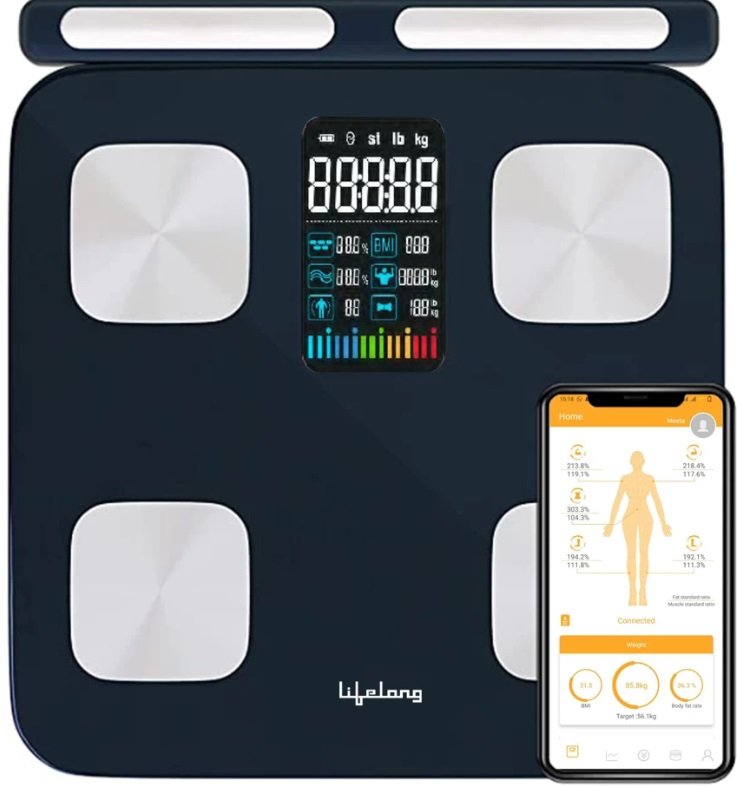
What Are Smart Weighing Scales?
Smart weighing scales(Health gadgets), sometimes called “smart body analyzers,” do much more than give you a number on a screen. Unlike traditional scales, these devices measure a variety of metrics—such as body fat percentage, muscle mass, water composition, bone density, and even heart rate. They connect with apps on smartphones, tablets, or computers, providing insights into your health over time and often integrating with other fitness and health apps like Apple Health, Google Fit, and MyFitnessPal.
Key Features of Smart Weighing Scales(Health gadgets)
- Multi-Parameter Health Metrics
Smart scales go far beyond weight. With sensors and electrodes, many smart scales measure various health parameters, including:- Body Fat Percentage: Gives an estimate of body fat compared to lean mass, useful for tracking body composition changes.
- Muscle Mass: Helps track muscle growth, which can be crucial for strength training or bodybuilding.
- Water Percentage: Indicates hydration levels, which is valuable for athletes and those focusing on hydration.
- Bone Density: Provides an estimate of bone mass, which is useful for older adults or those concerned with bone health.
- BMI (Body Mass Index): Automatically calculated based on weight and height, offering insights into overall body composition.
- Wi-Fi and Bluetooth Connectivity
Smart scales use Wi-Fi or Bluetooth to connect to health-tracking apps. This connectivity lets users track trends over weeks, months, and even years. Whether you want a detailed overview or a quick glance at your daily stats, the scale’s data syncs automatically to your device. - Compatibility with Health Apps
A key benefit of smart scales is their compatibility with major health and fitness apps. By syncing with apps like Fitbit, Apple Health, and Google Fit, you can monitor your progress, set goals, and stay motivated. Many scales even allow data sharing with personal trainers or family members, making it easier to stay accountable. - User Profiles and Family Sharing
Most smart scales support multiple user profiles, which means one device can be used by several people. The scale identifies each user based on past data, making it an excellent choice for families or households with multiple health enthusiasts. - Trendy Design and LCD Displays
Smart scales have sleek, modern designs with clear, easy-to-read LCD or LED displays. They often come in various colors and styles to fit any bathroom or bedroom aesthetic.
How Smart Scales Work(Health gadgets)
The technology behind smart scales is impressive. Many scales use a method called Bioelectrical Impedance Analysis (BIA). When you step onto the scale, it sends a safe, low electrical current through your body. Since different tissues (fat, muscle, water, bone) conduct electricity differently, the scale can measure the resistance and estimate each component’s percentage in the body. Though BIA is not as accurate as professional medical scans, it provides a reliable estimate that can be tracked over time.
Benefits of Using Smart Weighing Scales(Health gadgets)
- Insightful Health Tracking
The most significant benefit of a smart scale is the insight it offers. By tracking various metrics, you gain a fuller understanding of your health, beyond just weight. This can be incredibly motivating, especially if you’re focusing on losing fat, gaining muscle, or improving hydration. - Goal Setting and Motivation
Smart scales let you set realistic health goals and monitor your progress over time. By displaying weekly or monthly trends, they help you stay motivated, even if the daily numbers fluctuate. - Improving Health Awareness
Many people don’t realize that weight alone is not a comprehensive measure of health. Smart scales teach users about body composition and the importance of lean mass, water intake, and bone density, fostering a holistic approach to wellness. - Accountability
With regular tracking, you can easily see how your habits—like exercise, diet, or sleep—impact your health. The ability to sync data with apps or share it with friends or family can also help you stay accountable.
Choosing the Right Smart Weighing Scale(Health gadgets)
When choosing a smart scale, it’s essential to consider your goals and which features matter most to you. Here are a few tips to guide your choice:
- App Compatibility: Ensure the scale syncs with the fitness apps you use.
- Metrics Tracked: If you’re looking for detailed metrics, make sure the scale tracks body fat, muscle mass, and water percentage.
- Accuracy and Reliability: Read reviews to understand how accurate and reliable the scale is, especially regarding body composition metrics.
- Battery Life: Some scales use AAA batteries, while others have rechargeable batteries. Make sure the scale you choose meets your convenience needs.
While smart scales provide valuable insights, it’s worth noting that they are best for tracking trends rather than pinpoint accuracy. Factors like hydration level, recent exercise, and even meal intake can affect readings. So, while they may not be as accurate as medical-grade equipment, they provide a useful baseline for tracking progress over time.
These Health Gadgets are powerful tools to monitor and maintain your health daily. While they’re not substitutes for professional medical advice, they can help you stay informed about your body’s needs and promote preventive health practices. By integrating one or more of these devices into your routine, you can make better-informed health decisions and lead a more balanced lifestyle.
Revolutionary Breakthroughs: Top 05 Modern Medical Research Innovations Transforming Healthcare
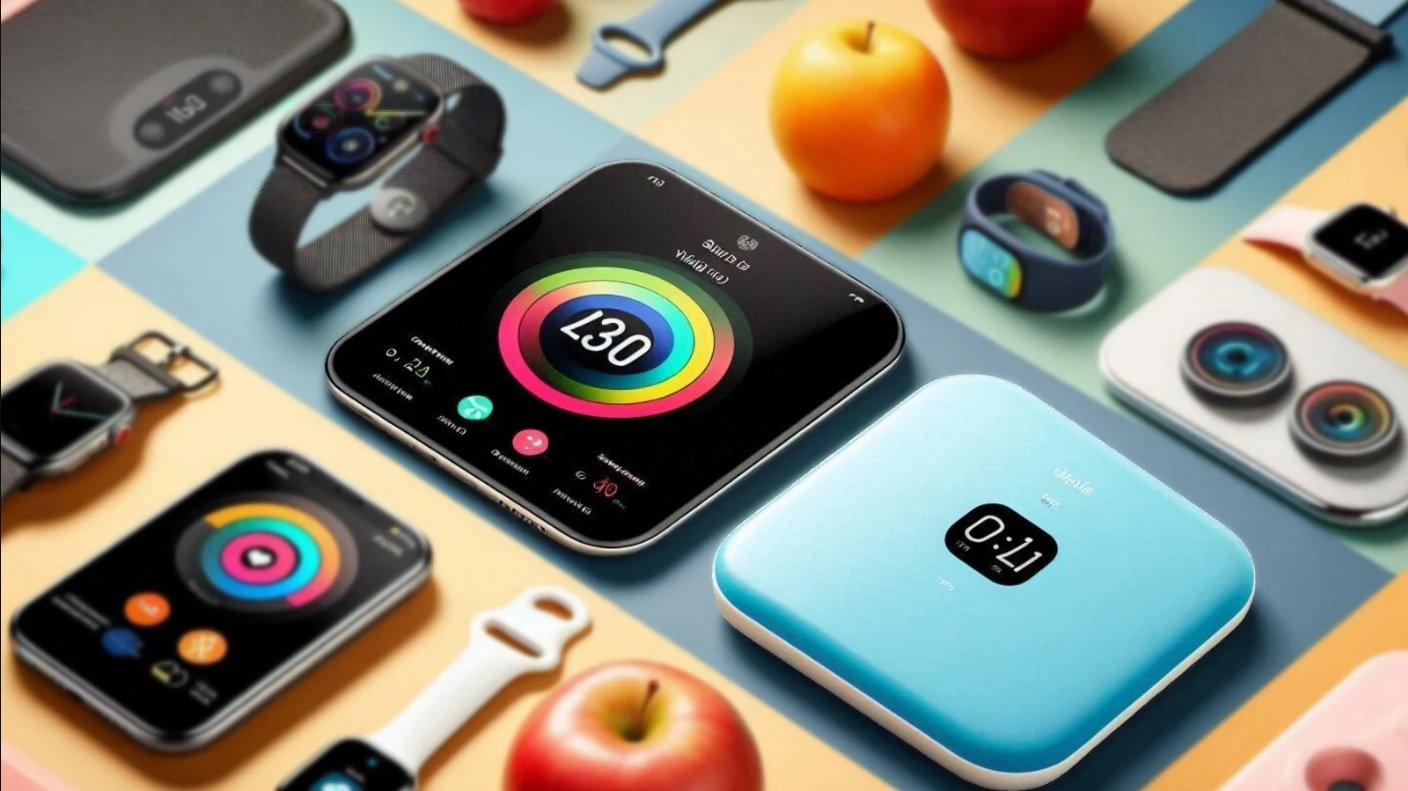













2 comments